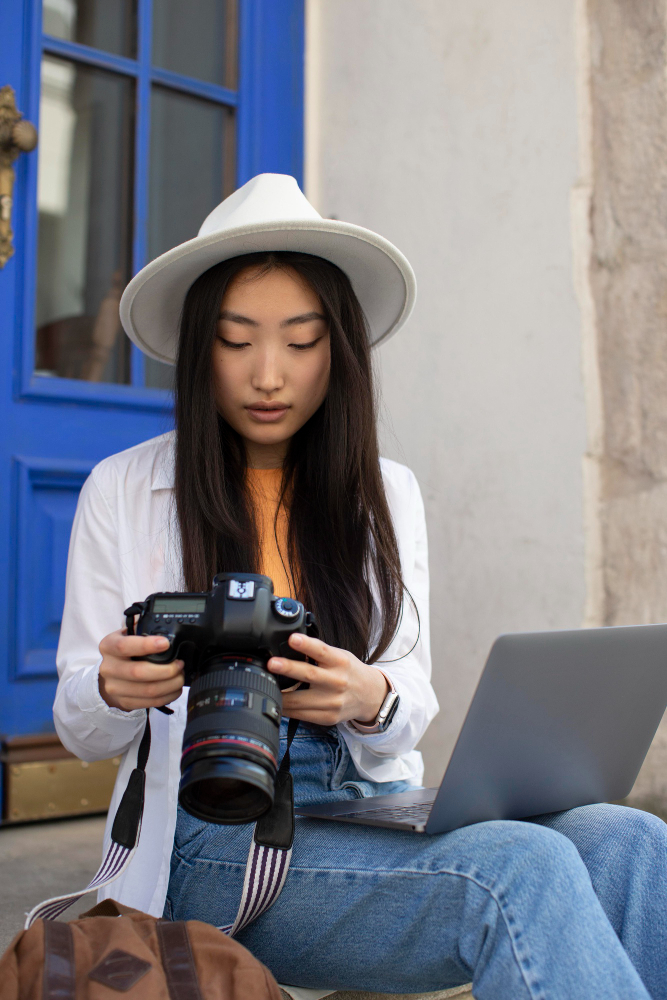 Do you know where the word “camera” comes from? If you’ve studied any Romance languages, you may associate the word with the concept of “room.” In fact, the camera is a descendant of a very old technique called the “camera obscura,” which is Latin for “dark room.” The camera obscura works on basic physics principles of geometric light rays, and has been known about by various cultures for thousands of years.
Do you know where the word “camera” comes from? If you’ve studied any Romance languages, you may associate the word with the concept of “room.” In fact, the camera is a descendant of a very old technique called the “camera obscura,” which is Latin for “dark room.” The camera obscura works on basic physics principles of geometric light rays, and has been known about by various cultures for thousands of years.
The camera obscura mirror can just be seen above the dome in the capola.To understand the camera obscura and its relation to the modern camera, let’s first understand how you see an image. When light rays from your surroundings enter the small opening (pupil) of your eye, they cross and form an image on the retina. This image, which is upside-down, is sensed by receptor cells on the retina, which then transmit the image to the brain. But for forming this upside-down image, there is nothing special about your eye; any small opening, or aperture, will do the exact same thing. Light rays passing through any tiny hole go straight on through, crossing and producing an image on any flat surface or screen placed behind the hole.
So why do we not constantly see upside-down images all around us? To be able to see the image produced by the light rays passing through the aperture, you must stop all other light from reaching the screen. To do this, you could put the screen in a very dark room. Completely block the light from all windows except for a small pinhole in front of the screen. You will also need a very bright source outside, like the sun on a bright day. This is because only a small fraction of light rays from the source will make it through your very small aperture. Now you have a camera obscura! Not only can you see the upside-down image of the outside world on the screen (or opposite wall), but you can also see all the colors and all the motion of the outside world.
Now imagine that the camera obscura is not a room, but a small box, which works just as well. But we are not yet technologically on the same level with your eye; the eye also has a set of lenses which focus the light rays onto the desired plane. What’s more, you can change the shape of these lenses by squeezing your eye muscles in order to focus on objects at different depths. (The light rays diffract slightly when they pass through the aperture, and they do this more for closer objects.) We therefore should place some convex lenses inside our camera box, just after the aperture. Add in the ability to move these lenses to focus on objects near or far, and we are getting closer to the sophistication of your eye.
Images would mean nothing if they were not saved for more than an instant, so your eye uses nerve cells to pass the image to your brain for recording. Let’s add this function to your camera box by putting a piece of material that is sensitive to light on the screen or focal plane. Now after you’ve taken your picture, apply a chemical treatment to this material so that it will not keep on responding to light, and voila! You have your photograph. The first photography in the early 19th century was invented this way.
When Mo-Ti, an ancient Chinese philosopher, first discovered the camera obscura in the 5th century BC, he called it a “locked treasure room.” Mention was also made by the Greek philosopher Aristotle in the 3rd century BC and the Islamic scientist Al-Hazen in 11th century Egypt, who used it to calculate the speed of light. Johannes Kepler, a German astronomer, used the device to aid his astronomical observations. It is thought that after Leonardo Da Vinci noted the camera obscura as a tool for drawing, several artists of the 17th and 18th centuries used it to create intricate detail in their paintings. The device shows up in the movie “Girl with a Pearl Earring,” a chronicle about the artist Johannes Vermeer and his painting with this name.
Some tourist attractions feature a room that acts as a camera obscura. Often you will see these with a rotating lens in front of the aperture to gradually show the visitor a view of the entire scene outside. With lenses and mirrors, these devices can show the viewer panoramic scenes with variations in size and motion that are awe-inspiring.
If you’re fascinated and passionately interested in the technical side of photography, then this down-loadable photography techniques guide will be something you’ll want to see and have. You can see it here.

